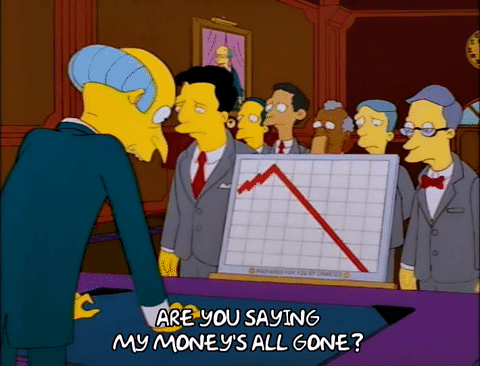Why Do Women's Clothes Cost More Than Men's?
A lesson from the late, great Ed Lazear
Economics textbooks often treat firms as one of two different types: price-takers or price-setters. If a firm is a price-taker, it observes the market price of good they sell and they produce a quantity that maximizes their profit at that price. Typically, firms that are price-takers are those that sell homogeneous goods. A price-setting firm is just as it sounds. The firm produces a good that is sufficiently different from other goods that it is able to set its own price. Of course, this firm faces a downward-sloping demand curve, so it must set its price such that the quantity demanded is also the profit-maximizing quantity.
This all sounds simple enough and we can get a lot of mileage out of comparing and contrasting these distinctions. However, there is an important element of price-setting behavior that should not be glossed over: how does the firm know the shape of the demand curve?
The textbook treatment of price-setting firms starts with the premise that there is some demand for the firm’s product. Given that demand, the firm has to decide how to set its price. To understand the incentives of the firm, one has to understand the nature of costs and how the revenue of the firm changes when the price changes. This is no doubt valuable. Nonetheless, once the finer points of this approach are well understood by students, it is important to take a step back and think about how firms figure out what price to charge and the shape of the demand curve for its product. In doing so, one can understand why firms set prices the way that they do and why those prices might change over time as the firm learns.
Firms that have been in the market for a long time might well understand or approximate what their demand curve looks like. For those firms, the price-setting model is good for understanding their behavior. When a new price-setting firm enters the market, this firm has no idea what people are willing to pay for its product. Thus, it doesn’t really help to think of these firms as setting the price optimally given some known demand curve. Fortunately for us, the late, great Ed Lazear gave us a way to think about this type of problem.
Let’s start with the most basic problem. Suppose you are operating a firm that sells a perishable good. To make things simple, you only have one unit of the good to sell and you don’t know the customers’ willingness to pay, but you do know the distribution from which the willingness to pay is drawn. What is a firm like this to do? Since the good is perishable, the firm has one period to sell the good. The firm will only sell the good if it encounters a consumer who has a willingness to pay that is greater than the price the firms sets. Knowing the distribution of willingness to pay, the firm will choose the price that maximizes its expected profits. Let’s say, for the sake of argument, this is $1.
In this case, the firm will either sell the good to a customer or it will not. Regardless, the one-period example is just a foil for thinking about a variety of other factors. For example, suppose that the firm has two periods to sell the good instead of having only one period. The firm should be expected to do the same thing that it did in the one-period world: maximize the expected profit given the distribution of willingness to pay.
The important difference in this case is that the firm would not choose to charge $1 in both periods. Given that the firm will have two opportunities to sell the good, the firm will charge two different prices in each period. To understand why, consider that once the firm reaches period 2 without selling the good, it knows that the price in the first period was too high because it didn’t sell the good. So the firm must charge a lower the price in the second period than it did in the first. Of course, knowing that it will have to charge a lower price in the second period means that to maximize the expected profit, it needs to charge a higher price in the first period than it would in the one-period example. For example, the firm might now charge $1.25 in the first period and $0.75 in the second period. The failure to sell the good in the first period is followed by a clearance sale in the second period.
What this reveals is that when we think about prices in a dynamic setting, there is a discovery process for the firm. What the firm is trying to figure out is the price it should charge for its product. A high price is better for the firm, but only if someone is willing pay it. When there is time to sell that product, the firm will start with a higher price and then lower that price over time until the good is sold.
This general conclusion seems simple enough. Nonetheless, we might wonder what sort of factors might influence how much the price changes over time.
In the two-period example, it was assumed that there was information obtained by the firm in the first period. Specifically, if nobody bought the good, then the price must be too high. This is not necessarily true. For example, there might be heterogeneous consumers. The firm is bringing a new product to market. Some people who see it might have a lower willingness to pay than the minimum price at which the firm would be willing to sell it. In fact, some might not want the good at all. In this context, the failure to sell the good is not as informative as the original example.
When markets are thin (there are few potential buyers for the product), the failure to sell the good in one particular period is not particularly informative with respect to price. The good might have remained unsold because of how few potential buyers actually exist. Alternatively, it could be that the price is too high. Since there are so few buyers, it is hard to determine the reason the good remains unsold. In this case, the firm is likely to keep the price fairly constant over time as it tries to ascertain why the good isn’t being sold.
As I have argued before, prices might be sticky because of things like search. Lazear’s model suggests a similar result. Consumers might not have information about the products being sold. If so, they will engage in search to obtain that information about the various goods being sold. When this is the case, some people will show up to look at the good. Once they see the good, they might determine they are not interested. Others might have a lower willingness to pay than the set price. Again, this makes it hard to determine whether or not there is any information conveyed to the firm when the product remains unsold. The failure to sell the good could be the result of a thin market. On the other hand, it could be that the price is too high. Since it is hard to determine, the price will be relatively constant over time as the firm tries to gather more information.
Overall, what this implies is that the greater the uncertainty over why the good remains unsold, the smaller the observed price reduction for a given length of time on the market.
Lazear’s model provides us with ways of explaining differences in prices that cannot be explained by differences in costs. Think about the original example. The price that maximized expected profits in a one-period model was $1. If this isn’t a once-and-for-all problem and the firm is permitted to learn, the price might be set at $1.25 in the first period and $0.75 in the second period.
Herein lies an important lesson. Suppose that there are two different goods. The willingness to pay for both goods is drawn from a uniform distribution. The mean of the distribution for each good is the same, but one good has a larger variance than the other. This suggests that the maximum willingness to pay is higher for the good with the larger variance. The initial price of the good with a high variance in terms of willingness to pay will be higher than the initial price of the other good. Why? Because the firm does not know the price that will allow it to sell the good. By setting a lower price, the firm can increase its chances of selling the good at the potential expense of sacrificing foregone revenue. But the firm can learn over time. If the firm doesn’t sell at this higher price in the first period, it can have a clearance sale next period. Thus, the firm must balance the trade-off of the effect of a change in price on the probability the good is sold and the effect of a change in price on the firm’s revenue. At the same time, the firm knows that it can always sell the good at a lower price in the future. What all of this implies is that the firm’s initial price is increasing in the variance of the prior distribution of willingness to pay.
Why do we care about this at all? Well, it brings us to the question posed in the title to this post: Why do women’s clothes often cost more than men’s clothes? An obvious guess might be that the average cost of women’s clothing is higher. However, this does not seem to be empirically valid. What Lazear argues is that women’s clothing comes in a great deal more varieties than men’s clothing and that greater variety implies greater variability in terms of willingness to pay.
Women’s clothing is likely to come in many colors and styles relative to men’s clothing. Firms are not necessarily sure which color, style, or combination of the two will be most popular. Even if the average willingness to pay for women is the same as men, there might be a considerably higher willingness to pay for certain combinations of style and color. Given the uncertainty, firms might wish to start with higher prices for women’s clothes and then sell the unpopular colors and styles at marked down prices.
Of course, this question is about initial prices. Relating back to the earlier argument, how the prices of men’s and women’s clothing change over time is related to the durability of the style of clothing. For example, suppose that what is fashionable for women changes more rapidly than it does for men’s clothing. If this is the case, then we should expect that even though women’s clothing costs more than men’s clothing, the price of women’s clothing declines much faster than men’s clothing for a given level of inventory.
Overall, Lazear’s simple model gives us a lot to think about. When firms enter a market, we cannot simply think of firms choosing a price on some demand curve. Instead, firms will set prices and receive feedback. As the firm receives feedback, it will adjust its price accordingly. Of course, the more noise that there is in this feedback, the slower the price adjustment. Thus, the more searching that is required on the part of consumers or the thinner the market, the slower that prices will adjust. Furthermore, differences in the variability of prices between different goods might explain why some goods tend to cost more to consumers than others, even if the cost to produce them does not differ. As a result, the model might even explain why women’s clothes often cost more than men’s clothes.





I just love reading these posts.
can I have some objectives